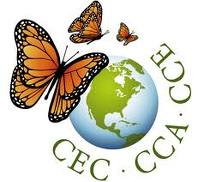A project coordinated by the Commission for Environmental Cooperation (CEC) of North America is promoting the setting of US-Mexico binational priorities for conservation efforts in the cross-broader Big Bend/Río Bravo ecosystem.
 10 September 2012: The Commission for Environmental Cooperation (CEC) of North America held a workshop bringing together scientists and government officials from Mexico and the US to set priorities for conservation of the important Big Bend/Río Bravo cross-border ecosystem. The Workshop was held 7 September 2012 in Mexico City.
10 September 2012: The Commission for Environmental Cooperation (CEC) of North America held a workshop bringing together scientists and government officials from Mexico and the US to set priorities for conservation of the important Big Bend/Río Bravo cross-border ecosystem. The Workshop was held 7 September 2012 in Mexico City.
The Big Bend/Río Bravo ecosystem, involving grasslands, wetlands and forests and hosting a large number of species, encompasses eight different protected areas in the US state of Texas and the Mexican states of Coahuila and Chihuahua. In 2010 the Presidents of Mexico and the US declared the ecosystem to be a natural area of binational interest. The CEC was tasked with coordinating work through a special project, the Big Bend/Río Bravo Collaboration for Transboundary Landscape Conservation, overseen by a working group co-chaired by Mexico National Protected Areas Commission (CONANP) and a scientist from the US’ Big Bend National Park.
The Mexico City workshop brought together experts from both countries to build binational consensus on research needs, priorities for conservation actions and other recommendations for conservation authorities in both countries. The CEC is due to publish a publicly-reviewed and peer-reviewed conservation assessment of the ecosystem in January 2013.
The CEC was created by Canada, Mexico and the US to implement the North American Agreement on Environmental Cooperation (NAAEC), the environmental side accord to the North America Free Trade Agreement (NAFTA). [CEC Press Release]